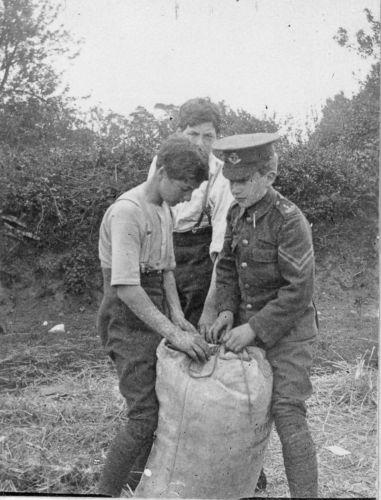
Figure 1.-- Here English boys are partucipating in a summer cadet camp, we think during Workd War I. |

|
England has several different cadet organizations. There are programs for each of the different services. We believe there are Cadet programs sponsored by Royal Air Force, the Royal Navy, the Army, and the Royal Marines. Each of the service programs have separate histories. The Army cadet prigram has a long history. It was especially important because for years, Britain's defense history was based on a poerful Royal Navy, but only a small standing army. British armi were historically much smaller than continental armis and unlike the continental armoes di not have military conscription. The RAF program was not set up until World War II. Britain almost lost the War because there were o few tained pilots. Normally a school only choosees one of te program, largely for practical reasons. The schools are not large enough to support more than one program.
Air Commodore Sir John Chamier was the major force in founding the British Air Cadet Program. Britain entered World War I with an Army and Naval Cadet Program, but no cadet program for the Royal Flying Corps, at the time oat of the Army. It was the foerunner of the Royal Air Force. Chamier served as a pilot in the War and watched many poorly trained young men die withuin in days of being deployed to the front. Flying was one of the mos dangerous military assignments during the War, especially for new pilots. Chamier formally transferred to the Royal Air Force after it was officially constituted (1918). After a decade of post-War service, he retired (1929). He became Secretary-General of the Air League, a private orgianization consisting of individuals desiring to inform the British public about the importance of military aviation. The British like the Americans soon after the euyphoria of victory became disenchanted. Most came to believe that theWar had been a serious mistake. And the losses had been much larger than those suffered by the Americans. The British public was both determined to avoid participating in another War and voted for politicans who supported sharp cuts in military spending. When Hitlerv seized power in Germany and launched a major armaaments program, this oon put the Allies (Britain and France) behind in defense preparation and arms development. (France experienced the ame polityical process as in Britain.) Air Commodore Chamier, concerned about German rearmament and recalling the terrible tragedy of poorly tarined young pilots beung shot down by experienced Germann pilots, decided that Britain needed an air cadet corps in addition of the army and naval program. Chamier help found the Air Defence Cadet Corps (ADCC) (1938). The idea was to train youth in aviation skills. [MOD] The ADCC proved popularnanf thousands of youth joined, but facikities including glides and training air craft were very limited because if thesubstantial costs involved. Unfortunately for Britain, the Germans had begun this process earlir and with extensive Government support--The Flieger HJ. As a result, the Germans began the war with a much larger pool of trained aviators and youth with aviation skills. Goverment support for the effort did not begin until after the start of the War and the Battle of Britain. As it evolved, the RAF almost lost the Battle of Britain because of the shortage not of aircraft but of trained pilots. King George VI by Royal warrant finally turned the ADCC into an offical cadet program (1941). The ADCC organized beginning air training to teenagers below military age who were interested in joining join the Royal Air Force.
The Army had a few training schools. Sandhurst was the primary officer tarining school. The cadet program was established tomprovide a pool of potential officers in cae of emergencies. The Cadet program in Britain was a national program. Thus it was essentially the same throught Britain including Scotland. Only the unifoirm was different. Britain for many years had no standing army, a phenomenn dating back to the struggle between Parliament bnd the Crown. There was, however, a long history of local militias. The British fought the Crimean War with the French as an ally (1850s). Napoleon III and his asperations to empire caused some concern in England. The British Government began organizing local militia units into a nationwide Volunteer Reserve Force (VNF). Octavia Hill, a British social reformer, organized the first VCF unit on Castle Green--Robin Hood Rifles (1859). The VCF units responding to the interest of youths, bean forming Cadet Companies. Eight public schools decided to form independent cadet units. This was the genesis for what was to become the Army Casdet Force (ACF) which became the modern Combined Cadet Force (CCF). Adam Gray who was aleader in social reform founded more Independent Cadet Corps units (Late-19th century). The late 19th and early 20th century was a time of rising international tensions and rising military spending. Britain unlike the Continental countries did not have military conscription and a large standing army.
The Navy cadet program was different than that of the Army. The Navy had naval training schools both for officers and ratings (enlisted men). We are not sure, but we believe there were no naval cadet progrms at regukar schools. Hpefully our English readrs can orovide some information here. We do notice a photograph that look like a school cadet group.
Navigate the HBC Cadet Pages
[Return to the Main Cadet page]
[Return to the Main English Cadet page]
[Return to the Main youth group band page]
[Australia]
[New Zealand]
[Russia]
[Scotland]
[South Africa]
[United States]
Navigate the Historic Boys' Clothing Web Site:
[Return to the Main military page]
[Introduction]
[Activities]
[Biographies]
[Chronology]
[Cloth and textiles]
[Clothing styles]
[Countries]
[Topics]
[Bibliographies]
[Contributions]
[FAQs]
[Glossaries]
[Satellite sites]
[Tools]
[Boys' Clothing Home]
